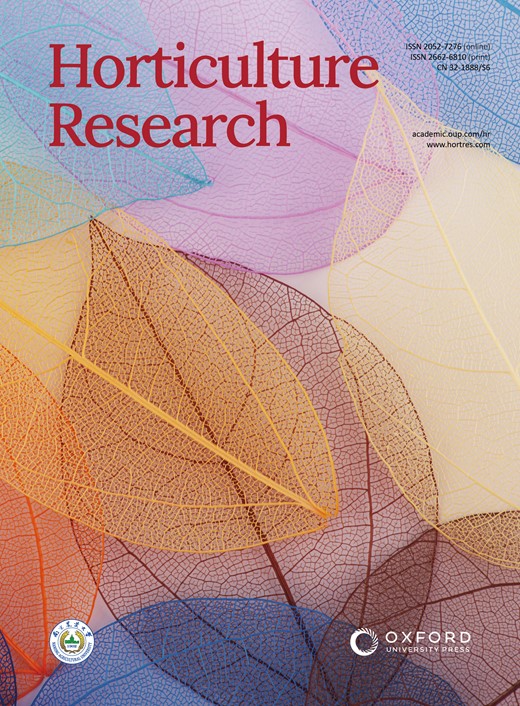Ancient duplication and functional differentiation of phytochelatin synthases is conserved in plant genomes
IF 8.7
1区 农林科学
Q1 Agricultural and Biological Sciences
引用次数: 0
Abstract
Summary Despite the paramount importance in metal(loid) detoxification by phytochelatin synthase (PCS) genes, no comprehensive analysis of their evolutionary patterns has been carried out in land plants in general and in crops in particular. A phylogenetic large-scale analysis of gene duplication in angiosperms was carried out followed by in vitro recombinant protein assays as well as complementation analysis (growth, thiol-peptides, elements) of Arabidopsis cad1-3 mutant with four representative PCS genes from two model crop species, Malus domestica and Medicago truncatula. We uncovered a so far undetected ancient tandem duplication (D duplication) spanning the whole core eudicotyledon radiation. Complementation with PCS genes from both D-subclades from M. domestica and M. truncatula displayed clear in vivo conservation of the differences between D1 and D2 paralogous proteins in plant growth, phytochelatin and glutathione pools, as well as element contents under heavy metal(loid) stress. In vitro recombinant PCS analysis identified analogous patterns of differentiation, showing a higher activity of D2 PCS genes, so far largely overlooked, compared to their paralogs from the D1 clade. This suggests that in many other crop species where the duplication is present, the D2 copy might play a significant role in metal(loid) detoxification. The retention of both PCS paralogs and of their functional features for such long divergence time suggests that PCS copy number could be constrained by functional specialization and/or gene dosage sensitivity. These results uncover the patterns of PCS evolution in plant genomes and of functional specialization of their paralogs in the genomes of two important model crops.植物基因组中植物螯合素合成酶的古老复制和功能分化是保守的
摘要 尽管植物螯合素合成酶(PCS)基因在金属(loid)解毒过程中发挥着极其重要的作用,但在陆生植物,特别是农作物中,尚未对其进化模式进行全面分析。我们对被子植物的基因重复情况进行了大规模系统进化分析,然后对拟南芥 cad1-3 突变体与来自两种模式作物物种(Malus domestica 和 Medicago truncatula)的四个代表性 PCS 基因进行了体外重组蛋白测定和互补分析(生长、硫醇肽、元素)。我们发现了一个至今未被发现的古老的串联重复(D 复制),它跨越了整个核心的真叶辐射。用来自 M. domestica 和 M. truncatula 的两个 D 亚支系的 PCS 基因进行互补显示,在植物生长、植物螯合素和谷胱甘肽池以及重金属(loid)胁迫下的元素含量方面,D1 和 D2 旁系亲属蛋白之间的差异在体内得到了明显的保留。体外重组 PCS 分析发现了类似的分化模式,与 D1 支系的同族基因相比,D2 PCS 基因具有更高的活性。这表明,在许多存在重复的其他作物物种中,D2拷贝可能在金属(loid)解毒过程中发挥重要作用。在如此长的分化时间内,PCS 准同源物及其功能特征都得以保留,这表明 PCS 的拷贝数可能受到功能特化和/或基因剂量敏感性的限制。这些结果揭示了PCS在植物基因组中的进化模式,以及在两种重要模式作物基因组中PCS旁系基因的功能特化模式。
本文章由计算机程序翻译,如有差异,请以英文原文为准。
求助全文
约1分钟内获得全文
求助全文
来源期刊

Horticulture Research
Biochemistry, Genetics and Molecular Biology-Biochemistry
CiteScore
11.20
自引率
6.90%
发文量
367
审稿时长
20 weeks
期刊介绍:
Horticulture Research, an open access journal affiliated with Nanjing Agricultural University, has achieved the prestigious ranking of number one in the Horticulture category of the Journal Citation Reports ™ from Clarivate, 2022. As a leading publication in the field, the journal is dedicated to disseminating original research articles, comprehensive reviews, insightful perspectives, thought-provoking comments, and valuable correspondence articles and letters to the editor. Its scope encompasses all vital aspects of horticultural plants and disciplines, such as biotechnology, breeding, cellular and molecular biology, evolution, genetics, inter-species interactions, physiology, and the origination and domestication of crops.
 求助内容:
求助内容: 应助结果提醒方式:
应助结果提醒方式:


